|
|
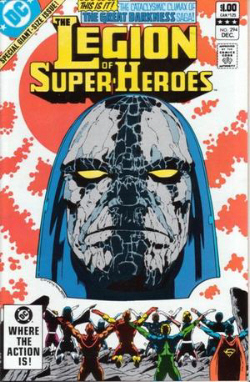 |
In the early 1980s, Paul Levitz began what has become one of the longest tenures by a writer beginning with #284. Kieth Giffen soon joined him and together they turned out some of the most memorable Legion stories, such as The Great Darkness Saga (Legion of Super-Heroes #290–294). Legion #300 celebrated a return of the Adult Legion, first envisioned by Jim Shooter and Curt Swan in the 1960s. This time around, a number of popular past Legion artists such as Dave Cockrum and Jim Sherman portrayed the grown-up Legionnaires in a series of vignettes.
The title was renamed Tales of the Legion of Super-Heroes with issue #314, while at the same time a new Legion of Super-Heroes title was launched, aimed at the direct market. Tales of the Legion of Super-Heroes continued for a year before reprinting stories from the new series, then ended with #354.
Giffen left the new series with issue #16, but Levitz stayed on until #63, during which time we saw Legionnaires come and go, including Superboy himself. During this time, the Superman titles were rebooted, removing Superboy from the DC Universe history. Reconciling the move with the Legion proved difficult, explaining that the Legion's Superboy came form a "pocket universe" created by the villainous Time Trapper. Eventually that Superboy perished and Levitz left the book. Giffen plotted the continuation of the series, which picked up five years later.
"The glory of writing The Legion was that you could do things that were real change," Levitz said in an interview with BACK ISSUE magazine (may 2007). "In most comics, you have the challenge that you can’t kill any of the principal characters, you can’t marry them off. How do you evolve it? The characters in Justice League are awesome characters to write, but your set of dramatic tools all sort of have mittens over them. In Legion, you could kill somebody every couple of years, marry somebody in between, have somebody have an affair, screw with their lives in one fashion or another."
Giffen also enjoyed his time on the title, saying, "You know, Legion was a book that was fun to do and we were at the right place, right time. 'The Great Darkness' is still, I think, the story by which all of my subsequent work is being judged."
Andy: I was a huge fan of Valiant when the company started and I know that a lot of collectors despise what Valiant did to the market by flooding it with variant, "Gold," "Platinum," and "Chromium" covers and basically helping the comic book market crash in the mid 1990's but the quality of storytelling in ETERNAL WARRIOR, ARCHER AND ARMSTRONG, SOLAR: MAN OF THE ATOM and RAI were really quite good. Now I am only endorsing the pre-Acclaim takeover of Valiant issues and storylines. The storytelling and overall quality quickly bottomed out after Acclaim took the reigns.
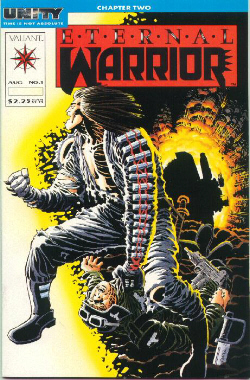
The early issues of ETERNAL WARRIOR in particular are my absolute favorites of the lot. The writers in the first ten issues of the series included Jim Shooter, Kevin VanHook, and Barry Windsor Smith (who also drew issues 6,7 and 8). Gilad Anni-Padda was immortal, could regenerate from injuries, had super strength, and literally thousands of years of combat experience. Being a history buff it was great watching Gilad's adventures both past and present. In particular: Ancient Mesopotamia, Ancient India, and even the pre-French Revolution days of the Three Musketeers, who he was one along with this brother Armstrong.
The best thing about these titles is that there are a glut of them just sitting in DOLLAR boxes in comic shops across the country just waiting to be picked up. I recently completed my Valiant collection for only $.25 an issue! The old adage that "you get what you pay for" is totally NOT the case here. These stories are full of great adventures with an historical bent, and introduced some great supporting characters and villains such as Geoff, the Geomancer, Master Darque and The Immortal Enemy. Definitely worth the pocket change and in many ways much better written, plotted and linked with a tight continuity that made sense (no Final Crisis necessary, thank you) than many titles today. With Valiant Entertainment promising to resurrect the characters with their pre-Acclaim greatness intact, grabbing these back issues from the dollar box now might prove to serve as a great reading base of knowledge preparing their readers for the characters' hopefully soon return.
Hervé: I suggest the Suicide Squad series by John Ostrander and Geoff Isherwood published in the early 1990s. That series introduced many long standing elements to the DC Universe, such as Amanda Waller and Oracle. It was also ground breaking with the inclusion of non standard characters like a fat older black woman. My favourite storyline was the Legerdemain story where former Justice Leaguers, Superman, Batman and Aquaman teamed up to look for the missing Atom - Ray Palmer. If you like Identity Crisis, this series was doing wicked stuff like Identity Crisis, before it was the norm.
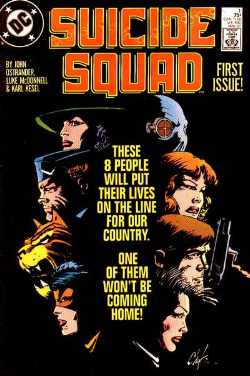
Another series I like was the infamous Atlantis Chronicles by Peter David and Esteban Maroto. In that series, they explained the history of Atlantis between Arion and Aquaman. They finally let readers know why Atlantis had sunk and why there were Atlantean cities all over the oceans. The story had lots of drama - as they called it at the time Dynasty under the waves.
Marvel fans have no fears, a great run was the Westcoast Avengers' run by John Byrne. As usual, Byrne came in and shook everything to the core, and then left before cleaning up the mess he made. But what a mess he created! The Wackos were as good a reading as the X-men back then. Of course, a lot of things Byrne did with the Avengers back then, affects stories today. For example, the fake children of Wanda Maximoff (the Scarlet Witch) and the Vision, the rehabilitation of Hank Pym, Tigra going nuts and all catty and more. It's a great series.
Something else that I think people should pay attention to is Mark Gruenwald's and Ron Lim's very long run on Captain America. The team worked so long on the series and even had biweekly issues in summers. With one team on the series, they developed many secondary characters, such as the Diamondback, Captain America's girlfriend back then. Of course, some of the elements introduced in that run have been used today. But best of all it was a consistent and fun series that highlighted the heroic qualities of Captain America.
Patrick O.: American Century by Howard Chaykin and David Tischman, is a loving, darkly comic and fun peek into 50's America (and Europe) with it's noir-ish 'Hero' Harry Block, getting tired of being a wage slave, faking his own death. Block goes on a series of adventures taking him to Hollywood, a revolution torn South American country, to mixing it with moonshiners in the deep south and beyond. Casting a light on some of the social issues of the time, this is definitely a series for adults, and is a highly enjoyable read.
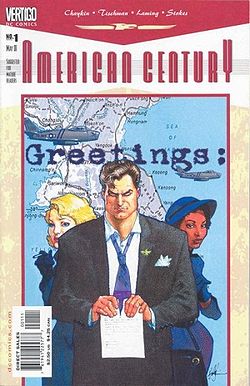
For Marvel comic fans and fans of the cosmic. I'd recommend the Silver Surfer comics from the late 80's to when that particular run finished in the late 90's. With people like Ron Marz, Jim Starlin, George Perez Jr among the writers and Ron Lim one of several laudable artists these chronicles of our angst ridden cosmic powered friend roaming the space ways are a real treat. And there were appearances by several other cosmic powered entities to whet the appetite too! The 'Infinity Gauntlet' series was a very good spin off from the series if I remember correctly, that is also worth a read. The surfer is a favourite of mine, so I may just be a touch biased. Ha ha.
Patrick B.: John Byrne's run (#232 to #291)on the Fantastic Four is always a sure bet for me when I scour the back issue bin. He really understood what this super-hero team was all about and he wrote great stories that took place in space, in parallel universes and here on Earth. Furthermore, it is easy to understand and to appreciate this comic book without much knowledge of the Marvel Comics' continuity. I remember as a kid (and even today) greatly enjoying it even if I did not know exactly what was the origin of every characters. I have seen a complete set goes as low as a 100$US on eBay recently.
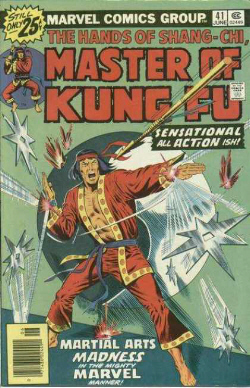
My second suggestion is Shang-Shi the Master of Kung-Fu. This series ran from the mid-70's to the early 80's and mixed martial art action with espionage and romance. How can you not appreciate a deadly international assassin with two swords instead of hands or a madman bend on controlling the world with his robots and gadgets. Add to that Shang-Shi the son of Fu Manchu and British covert operative and every elements are present for an entertaining read. Even if the first few issues are relatively expensive, most of the series can be picked up for not much. It's also worth mentioning that you should not expect a collected edition soon since I believe Marvel Comics do not own the rights to many characters anymore. Many were created (Fu Manchu, Nayland Smith, etc.) by Sax Romer for his pulp novels and were licensed to Marvel Comics.
Beth: If you can find the run that writer David Michelinie did on Amazing Spider-Man (especially issues 296-352), then you're in for a treat. I'd pay particular attention to locating issues 298-326, done with art by Todd McFarlane and a real treat for the eye and the imagination. Michelinie introduced Venom, and contributed inventive and entertaining stories featuring such classic villains as the Green Goblin, Mysterio, Sandman, the Chameleon and the Black Cat. These Spider-Man stories are flat-out fun, and emotionally satisfying. Look for the hidden spider on each of the McFarlane covers.
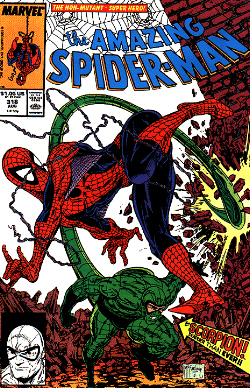
This is also a great time to look for back issues of self-published comics. I'm especially fond of Rich Koslowski's The 3 Geeks, a comic that pokes gentle fun at comic book geeks, their culture, and the society they keep. The current run, Slab Madness, spins a pretty unlikely and hilarious story, and former runs get even more carried away in all kinds of silliness. If you haven't read these, you are in for one of the best treats of your life. Buy them cheap directly from Koslowski at www.richkoslowski.com.
Another self-published comic not to be missed is Arsenic Lullabies by Douglas Paszkiewicz. A friend called these "sick and wrong," and this Eisner Award nominee does tend to disregard the boundaries of good taste, as all black-humored comic books should. Even Warren Ellis admitted to smiling when reading Arsenic Lullabies. With a recommendation like that, you know this has to be hilarious.
© Copyright 2002-2022 by Toon Doctor Inc. - All rights Reserved. All other texts, images, characters and trademarks are copyright their respective owners. Use of material in this document (including reproduction, modification, distribution, electronic transmission or republication) without prior written permission is strictly prohibited.

